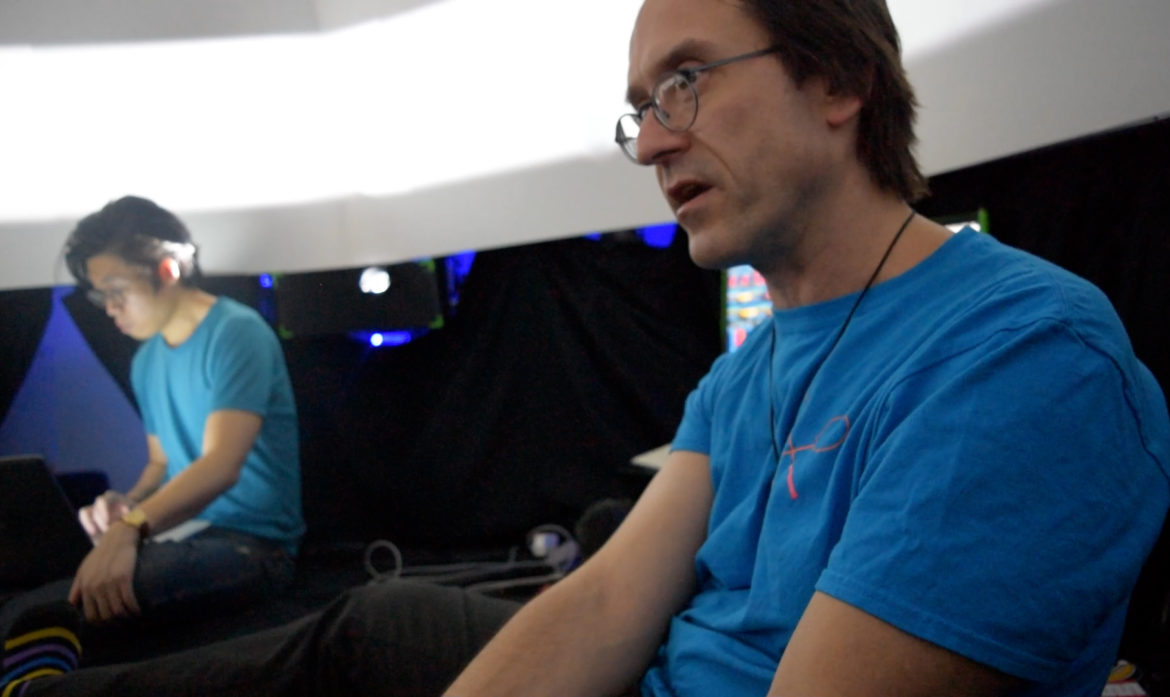Cinema is the art that transcends time more so than any other medium. Potentially, It also has the most influence on humanity than any other art form. While mainstream cinema conforms to standards that yield commercial success, avant-garde cinema is testing the boundaries of the medium to make sophisticated statements or provide transcendental experiences.
A kind of avant-garde cinema that captivated my heart thanks to it’s hypnotizing nature, is VJing. A merger of visual and audio into large scale video sculptures with the aim to create immersive environments for people to gather to dance, meditate, socialize and take in the art, in an electrically enhanced form of ritual.
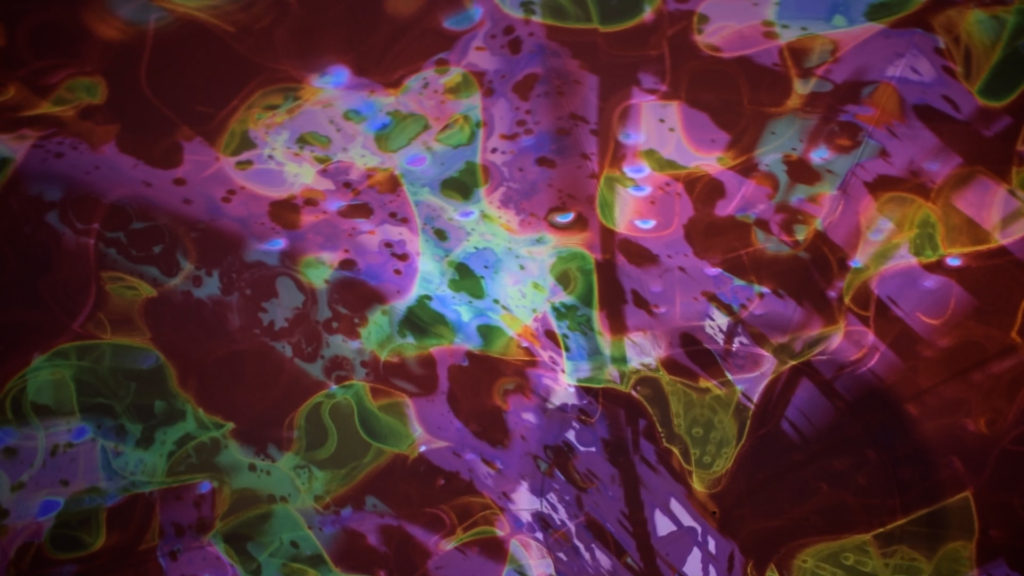
At the summer of 2019 I had the privilege of coincidentally getting familiar with the NYC based art collective XIX, and with the artists behind it, Timothy Leung and Mark Alan Johnson, also known as Dr Mojo Video Tech. As I’ve learned about the passing of Mark Alan Johnson, I’m moved to publish this following interview I took with the two creators.
Not often one get’s a sneak peak into a brilliant artist’s process of creation, and this was exactly this kind of encounter. It’s been my honor to capture some behind-the-scenes insights and captivating moments.
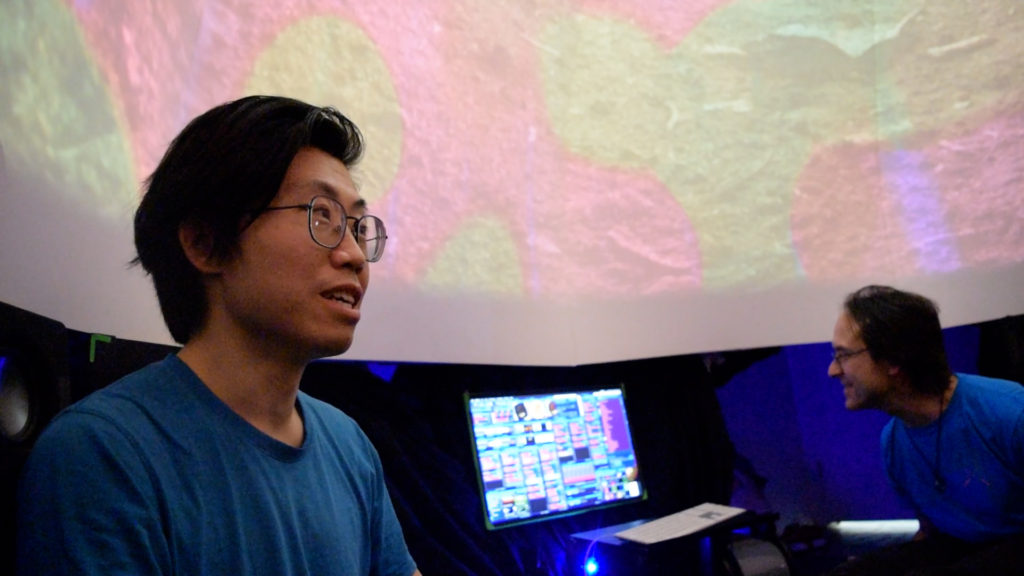
I first stepped into their rabbithole at the LIC Arts Open weekend, and found an art installation right up my alley. A dome not larger than a living room, with its entire cap projected with the most rich, intense, geometrically intricate abstract patterns. The projections are cued precisely with the rhythm of an original musical composition by NYSCA awarded composer John Sully. The result was a transcendental symphony of sound and color.
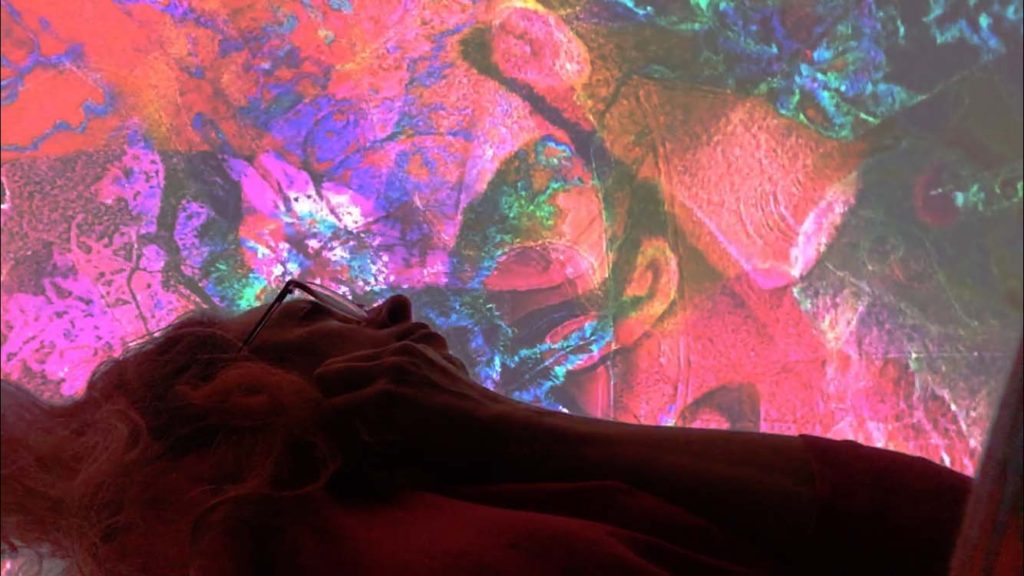
I was swept away into a calming fractalicious meditation, lying on the padded floor, which vibrates in coordination with the bass. Lying on our backs besides each other, completely awake, created a new type of intimacy between me and my partner.
Our kid who’d only been exposed to interactive art for 2 years – as long as his lifetime so far – was suspicious at first and wouldn’t dare to come in. You must admit that a living-room-sized hemisphere of optical illusions with only one entryway only allowing to climb in and out on your fours might seem intimidating even to an adult, not to mention a toddler.
Gradually he warmed up to the dome, and by the time the Meta-7 preview was done, he was dancing, cheering and rolling around the soft floor. The dome design was actually comfortable and resembles what you might imagine an inside of a womb feels like. It resulted in a playful, unusual quality time for our little family as much as it was a synesthetic aesthetic journey into the depths of our perception.
Being a student and junior artist obsessed with light-art, generative art, mixed reality and everything psychedelic, the dome hit all the spots. I returned to visit and get familiar with the art and the artists. They were kind and welcoming, and I got a rare chance to dig deep down into their creative process setting up a fully immersive, multi-sensory cinematic experience.
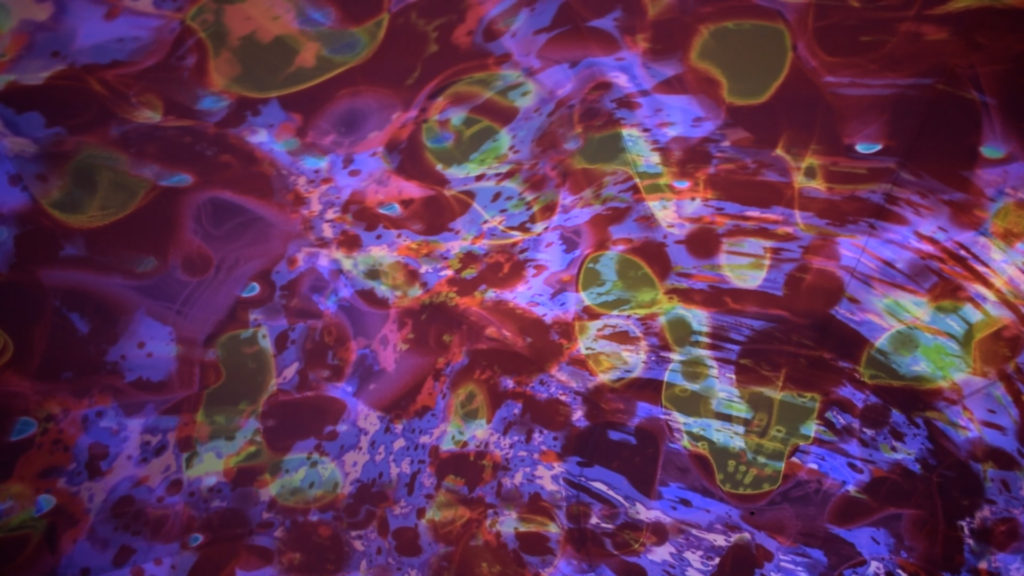
What led you to build this dome?
Tim: my background is architecture and installation. I’ve filmed short documentaries, about a furniture maker and about a dancer. Music was a major influence on my work and I was always fascinated by sound and the way it creates an environment.
I lived in New York for 10 years and felt like I needed a space that can transport you to someplace else. An ability to detach yourself from the city is very therapeutic for me and I think many people can benefit from that.
Therapy was a major inspiration. The concept for this installation is by musician and composer John Sully. I built the first dome prototype, but collaborating with architectural projection mapping specialist Mojo Video Tech (Mark Alan Johnson) is what made the Meta-7 vision actually come to life.

Why Meta 7?
Mojo: Meta 7 – Alchemic Opera – was our first production with John Sully’s 7.1 channel sound system. Even 7.2 if we include the vibrating floor. And due to size limitations, we found it’s ideal for groups of 7 people.
Tim: The acoustic effect inside the dome is like standing under a bridge. It’s similar to that, but even more pronounced. You hear 6 (or more) sources of sound, but they’re also getting bounced in an almost even distribution from all directions around you. The dome has a unique sound distribution pattern and musicians who play here live, get excited when they hear the acoustics inside.
Tell me about the visual aspect of Meta 7.
Mojo: I got introduced to Tim to help with the projection mapping because I used to have a cube with immersive surround projections on the walls, floor and ceiling. And this is a step up from the cube. The cube map is not as uniform as a dome, so if you’re not in the center the perspective is off so the immersion breaks. The entire visual content of Meta 7 is generative shader art, mixed live to John Sully’s musical composition.
What’s the place of narrative in Meta 7?
Tim: It actually meant to be a sensory meditation, going through the chakra colors, starting from the lower chakra to the upper chakra. Some of the narrative is obvious, and some of it you can pick up only when you revisit the composition and focus on certain details.
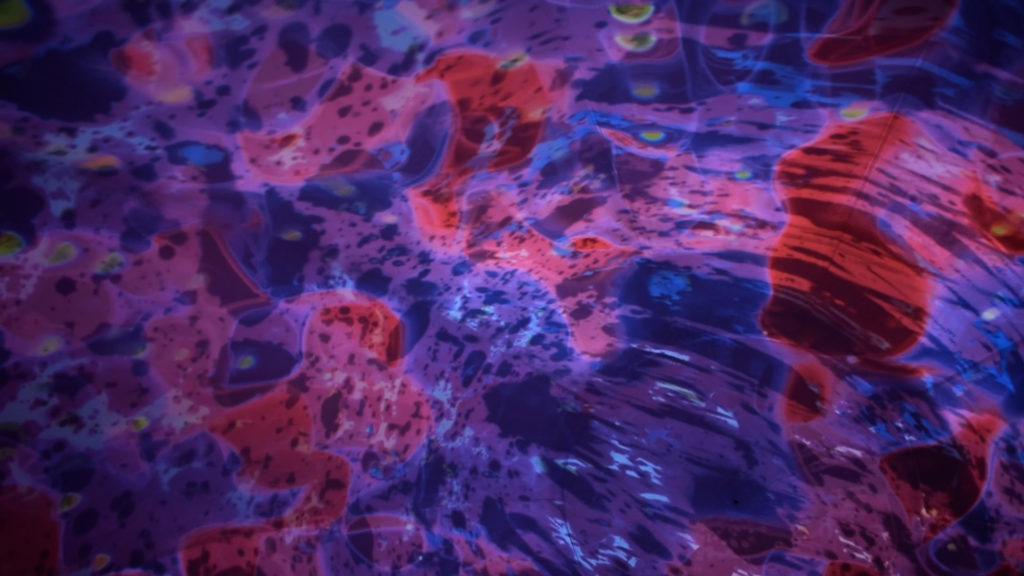
What were some technical difficulties you had to overcome?
Mojo: We were not even finished with the original plan by the day of our debut. We tried to create a fully generative piece with time cues (about 70) with each visual component set right in order. We tried to make it tight so the timing is right on the spot. If one component got out of order, the entire composition got displaced. If there’s any latency, it knocks you out of the meditative rhythm. And in a show 43 minute long, that had become a major issue. Looking back, we were taking a path in the way we were building the show that wasn’t viable. We pushed the tools to the maximum limit, and trying to push behind the limit. It got us into a lot of stress. So we made some major technical set back. The compromise we made was recording a background track that’s playing through the show. Eventually, there’s a live portion of the show that’s captured from a camera in the tip of the dome, and the rest of it is pre-recorded from the best sequences of the live mixes. Even so, it still does feel very dynamic and live.
This compromise was an experience of understanding that creating something new is never as simple as it seems.
Tim: In the end of the day, Meta-7 turned out to become an even more powerful experience than I thought it would be.
Do you see similarities between experiencing Meta-7, and going to the movies?
There are similarities, but there’s more to it. At the movies you look into the screen and don’t think about the people you’re with. At the dome, by the nature of the space, you’re experiencing the content with other people. The main component is the interaction between people.
The square screen is so small and limiting. It actually makes your world smaller. Having a place where you can not only be fully immersed in the content but also have dialogue with people is meaningful and inspiring.
Throughout the summer, Tim and Mojo welcomed me to continue the journey within their dome at one of their open jams. As a typical ITP student, I arrived with a drive full of experimental 360° footage, and a home-made VJ device I built in my first semester “VJ god”.
After short fine-tuning, we truly began to jam. Wiring the knobs within Mojo’s custom-made VDMX interface enabled us to control the clips and mix between them.
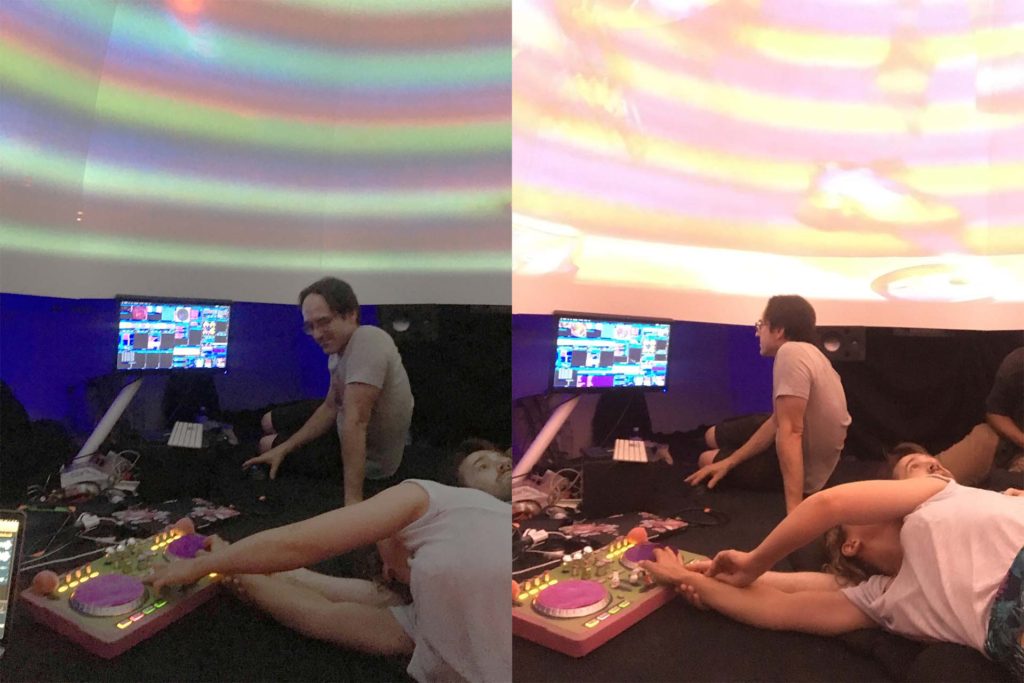
The group of 7 people, which included old friends, new friends and people who were strangers just minutes ago, got an extremely playful, very personal sneak peek into my world. My casual 360° footage was projected in its highest possible glory on the dome walls, making it look possibly more real than reality itself. In a twist of a knob you could pay a visit to my light-art-covered living-room at night, relieve a spectacular UV-themed party I attended last winter, or do an easy outdoor workout with me and a squirrel, in a serene suburban LA backyard, right here in an industrial NYC studio. Jamming with personal footage in a group had an unexpected intense effect. At certain moments, my friends confessed that it was “too much”, and I couldn’t agree more. Some parts were in fact shakey, but even the stable parts were disorienting and uncomfortably intimate. When taking these 360° videos, I considered preparing them for VR, but didn’t even envision a possibility of having them projected in such a large-scale, immersive setting.
What do you think about VR?
Mojo: It’s not there yet. It hasn’t taken off yet because the headset, which is never comfortable. You don’t really know what’s around you, so if you want to see your peripherals you have to turn your head all the time. It can be scary and disorienting. In addition it makes VR storytelling into something that’s really challenging. You can miss parts of the story if you’re looking the other way. It doesn’t feel like a welcoming experience and I find it to be very isolating. The most you can see in social VR is the other person’s avatar, but not the real person. It’s not the same interaction you can have with actual people, like the interaction you can have inside the dome.
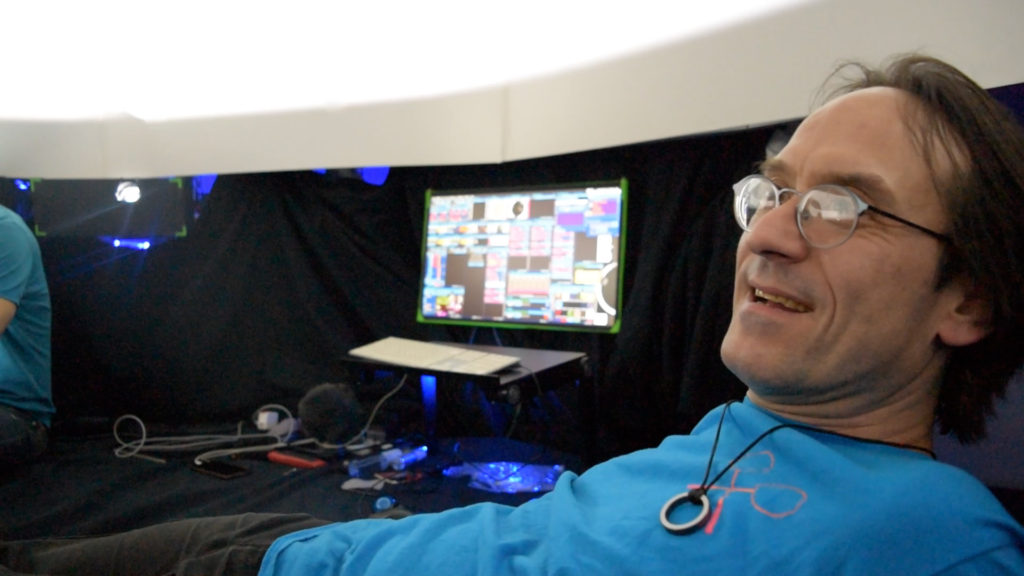
What’s the future of XIX Collective?
Mojo: We’re developing original content specifically for the dome and open for collaborative ideas. We’re thinking about what sensations we want to capture. For example, we’re exploring different ways of emulating the feeling of flying. We’re working with a pilot to incorporate his 360° footage. We found that one of the hardest things to catch good footage of, is flying through clouds. In an original format we’re developing, we’re trying to capture the history of flight. We’re collaborating with a travel documentarist that produces his show for VR, but projects it also inside the dome. VR content can be easily plugged in and played inside the dome. I’ve actually worked with ITP students in the past when I had the cube, and used it to project they’re Unity sketches. Nowadays with the dome and the specialized shaders we have, it’s even quicker and easier.
Tim: Additionally, we’re looking into creative ways of monetizing. We want to make the dome into a turn key, so anyone can assemble it themselves. We want to make it more modular. Possibly pieces connected to each other with magnets?
I thought about an extended version of the installation that has multiple domes. I’d like to create a borderless feeling. Be able to move between bubbles that aren’t closing you off, and exploring other ways in which people can interact inside this space.
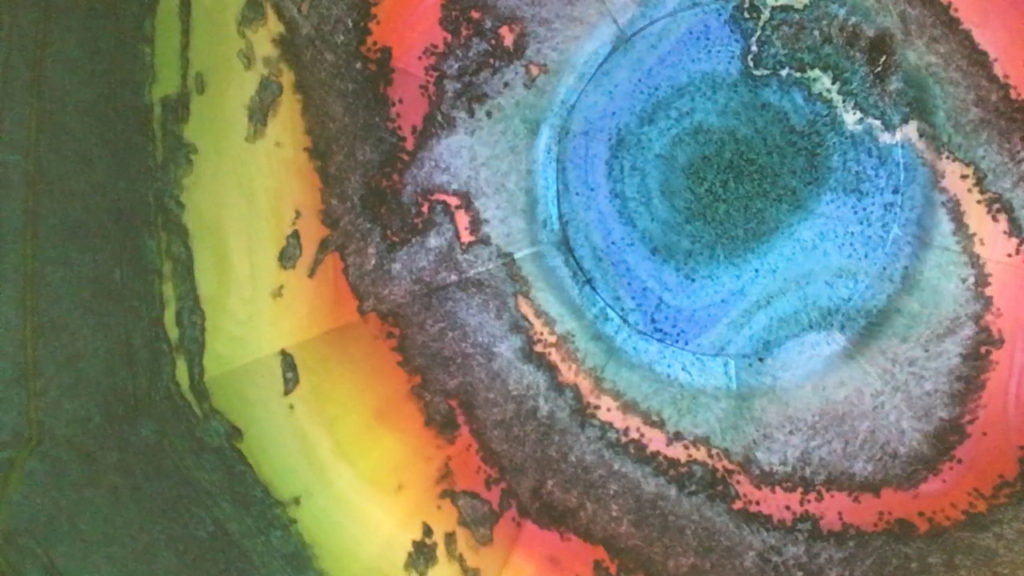
What would you do if you had no limitations?
Mojo: An entire 3D, volumetric capture. Unfortunately, we haven’t found a way to deliver a fully 3D, stereoscopic vision. We can do a lot of stuff with depth illusion, but eventually it’s only a 2D rendering of a 3D environment.
Tim: 3D is an interesting aspect but I’m not that intrigued by it. I’d like to explore more tactile aspects. Add moisture control for example.
What do you think of the trend of immersive shows?
Tim: I’ve done a lot of popup installations. Clients are actually interested in that. They want to have a deeper experience of their brand, that also looks spectacular on camera and can attract influencers. There’s a good chance immersive spaces will be the movie theaters of the future. Put entertainment and commercial applications aside, the therapeutic aspect of meditative art like ours also has a potential market.
Is vjing worth getting into?
Mojo: It’s the same as any art. I feel there are a lot of hacks there. There are people who are superficially involved in what I’ve developed my entire life. I do feel threatened by people who are not very serious and are doing work for free. In that way, they get abused, and we get undercut. It’s a terrible cycle. In the bottom line, it’s a tough profession to be in, so if you don’t love it don’t bother.
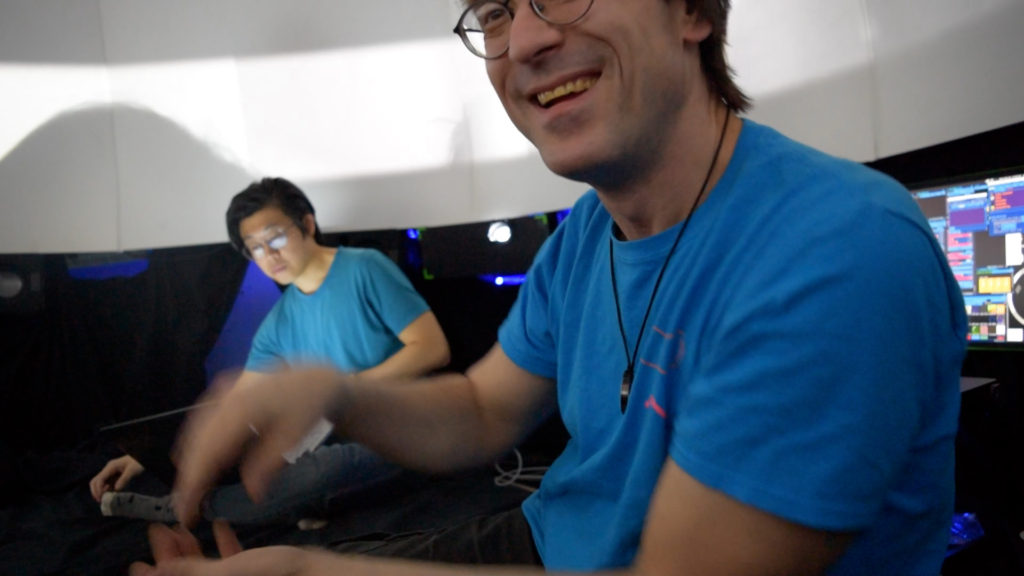
While some say that technology alienates and separates people from each other, art installations such as Meta-7 suggest an alternative. Technologically-boosted cinematic art-piece, that creates an unexpected, unconventional type of intimacy.
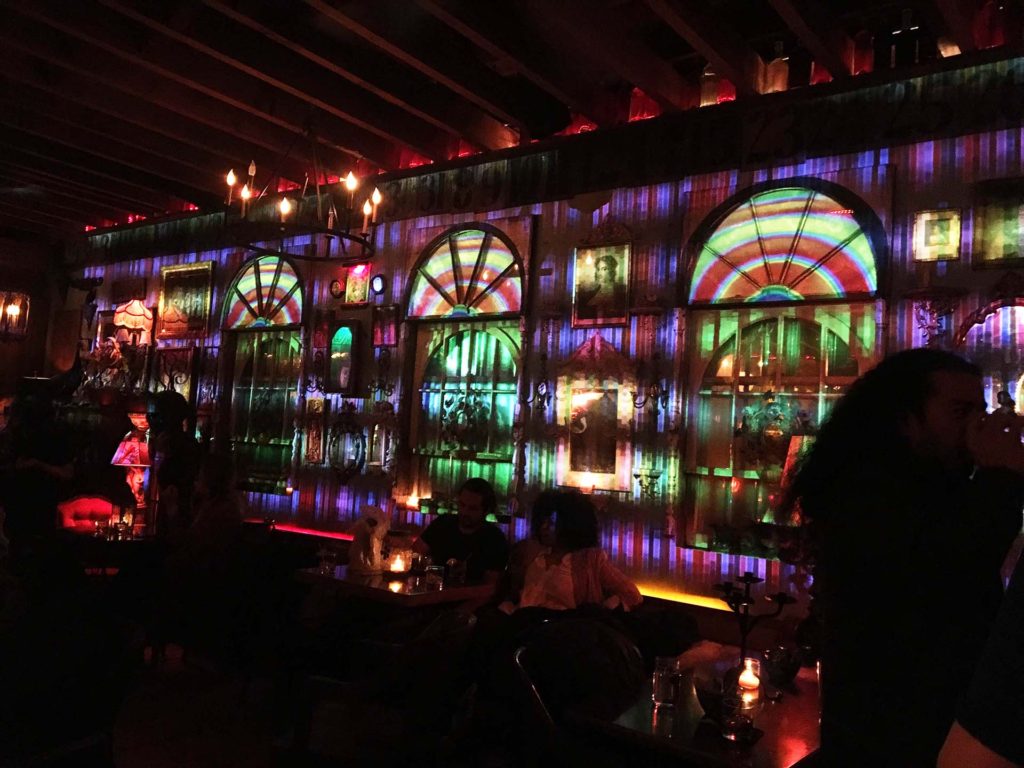
a snapshot of a VJ Mojo Video Tech stand-alone projection mapping at the Keep in Brooklyn
Informal video documentation, chatting about video art behind the scenes. This video documentation is not the best quality and doesn’t come close to catch the essence of art itself, but it does capture some very Mojo moments.
“It seems that I know that I know, but what I would like to see is the I that knows me when I know that I know that I know.”
― Alan Wilson Watts
Memorial for Mark Alan Johnson, AKA Mojo, will be held at House of Yes in Brooklyn next Thursday Oct 14 2021, at 6pm.

